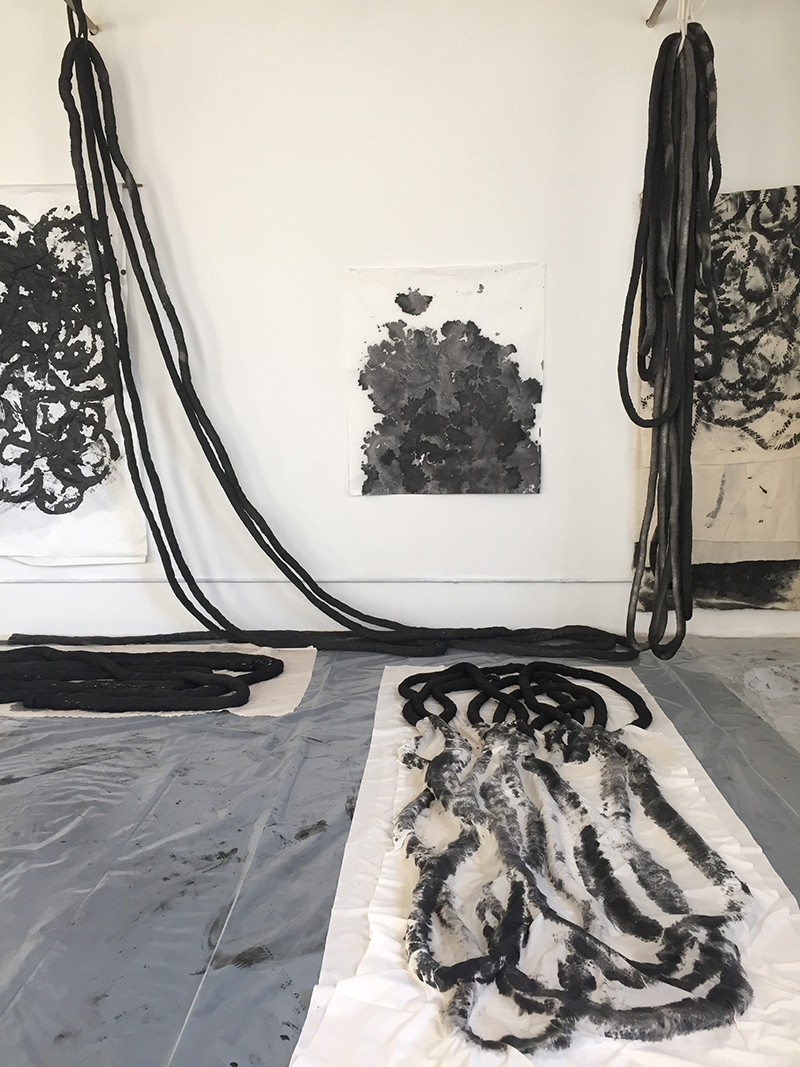SVMoA Blog
Heather Watkins: Artistic Practice as a Reflection of Personal Journey
Ava Scanlan (Communications & PR Manager)
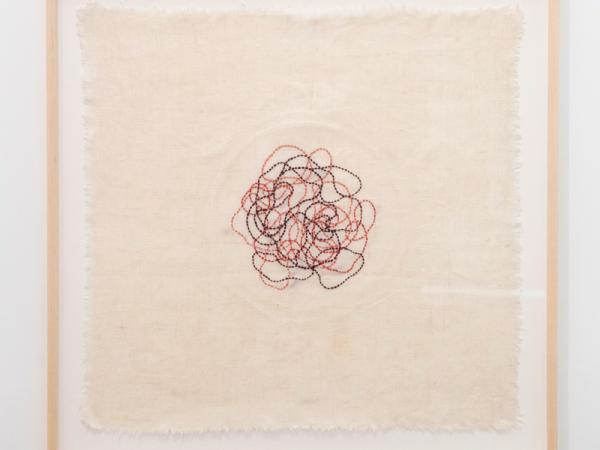
This week, we sat down with artist Heather Watkins, whose work is in our current exhibition, Bodies of Work: Art & Healing, to discuss her art and artistic practice as a reflection of her personal journey. An artist working in many media, including drawing, sculpture, printmaking, and artist’s books, Heather makes work that is an expression of time, flow, circulation, stasis, and gravity.
On Saturday, March 9, at SVMoA, Heather Watkins will join fellow artist Katherine Shaughnessy and author Sarah Sentilles in a conversation about their artistic processes and the ways that making art has helped them navigate their personal experiences with illness.
Can you tell us about your background and upbringing?
I was raised in Northern California in a small town in the Sierra Foothills, east of the Bay Area, not too far from Yosemite. It’s known as Gold Country, where prospectors came west to seek fortune (and claim land that wasn’t theirs) in the late 1800s. There was a strong literary presence as well, with figures like Mark Twain and Bret Harte and Jack London. Twain famously wrote his first short story set in the region about the idiosyncratic frog jumping in "The Celebrated Jumping Frog of Calaveras County.” I think the bigger and more lasting impact on me growing up in this area was developing a close relationship to nature. Hours and hours playing in the woods and creeks, surrounded by oak, pine, manzanita, the reddish-orange earth, pocked with granite and quartz.
I had the opportunity to spend time in other places through my adolescence, where I came to know different landscapes. I went to high school in New England and spent summers in the Pacific Northwest. At Pitzer College (in Claremont, California) I earned a bachelor’s degrees in English and World Literature and Classical Studies (with an emphasis on Art & Archaeology). I moved to Portland after college, and found a community in the arts, working and studying at the beloved (now unfortunately closed) Oregon College of Art & Craft. I returned to New England to study at the Rhode Island School of Design, where I received an MFA in 2000, and eventually made my way back to Portland, where I live and work now.
It’s interesting that your work fills an entire gallery in our current exhibition Bodies of Work: Art & Healing. It completely surrounds the viewer:
I had a week-long residency with SVMoA in August of 2023. Curator Courtney Gilbert and I spent time considering the Museum spaces, talking about various possibilities, and how my work would feel in the space. It became clear to both of us that a series titled Recordings would be central, and I liked the idea of giving them a room of their own within the Museum.
I first exhibited most of these works at PDX CONTEMPORARY ART in 2018 in an exhibition called “Waiting Room.” Although they can certainly be described as textiles or embroideries, I think of them as drawings. I don’t think of myself as a textile or fiber artist—needlepoint is not a craft that I am trained in. These thread-drawings began as a way to materialize and maybe account for a period of time when I couldn’t be in the studio much, when I was spending more time as a patient than anything else. Lots of waiting. This body of work involves a close/intimate engagement with the tools and materials: linen cloth, embroidery hoop, needle, thread, scissors. It’s a slow meditative process of translating the feeling of time—particularly the experience of waiting—into something one can sense. I think they benefit from a space that is quiet, where you can be alone with them.
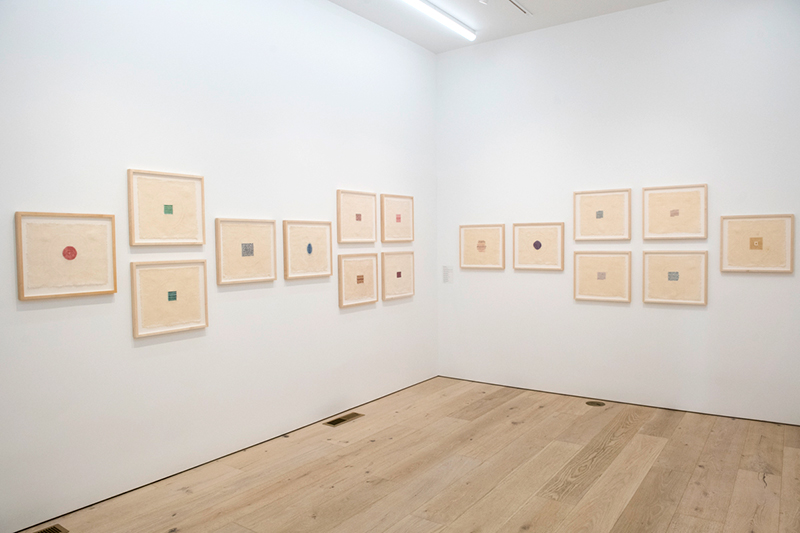
Gallery Group image of Recordings & SVMOA
Needlepoint is craft typically associated with women. How did you come to needlepoint as your medium?
Both of my grandmothers did needlecraft. Making things with fiber and fabric was just part of what they did with their hands, with their time. And it’s also how they cared for the people they loved.
My father’s mother was a knitter. She would knit mittens and hats for all the grandchildren, and when we were small, she made sweaters with zippers with little bells on them. She lived in Minnesota, and during our visits, she taught me how to knit.
My maternal grandmother lived across the street from us when I was growing up and she was a really gifted seamstress. She sewed for the entire family. She would create sets of pajamas for all the grandkids for Christmas—each family got their own print and fabric, and we’d take pictures of us all lined up in our matching outfits. She did needlepoint and embroidery as well. I remember a quilt project we started together. We cut a stack of little gingham squares, and she handed me a needle and thread and said to just stitch whatever design I wanted on them. All of her sewing supplies went to my parents’ house when she died, and I still look through them when I’m there.
I think part of why I started working with thread as a drawing material is rooted in these early experiences watching the women in my family make something by hand, all that care and all that time.
So, thread is just another medium for expression. Can you talk about your relationship to your materials, how you choose or find the materials you use?
A: My work in other media—ink, paper, cotton cording, wire—is very gestural and process-oriented. I think a lot about what a material does naturally, what its gestural language is, and what it might help me see or say. There’s a lot of experimentation as I develop an almost collaborative relationship with those materials, a give and take. My work with thread has become a more mediative, grounding, and deliberate part of my practice. The Waiting Room Recordings were like a sketchbook, little abstracted notations that refer to various influences and obsessions. They were made with sewing thread (not embroidery floss), some from my grandmother’s supplies. The thin size of the thread almost matches the gauge of the weave of the linen—they feel like weavings. I left the indentations of the embroidery hoop visible as a reminder of the process, evidence of one of the tools used to make the work.
Heather Watkins Studio
In the larger works (Soundings), I use a silk thread that is flat, a bit like a skinny ribbon. It feels almost like working with a nibbed pen. The first part of the Soundings series is part of the Vanport Collection at Portland State University and was commissioned by for a specific site: the waiting room in the School of Counseling and Psychology—I love that connection to the earlier series that inspired the commission. For this exhibition at the Sun Valley Museum of Art, I created another suite of Soundings, which relate to the first five formally, a little like an echo of each of them.
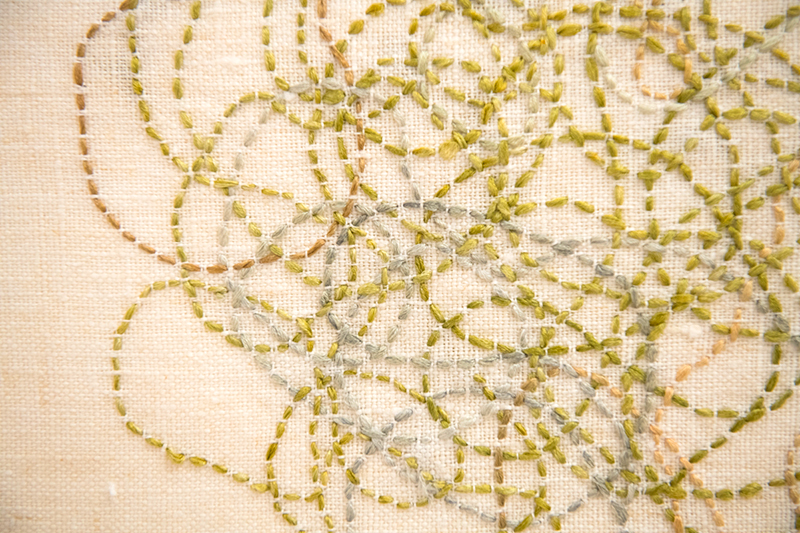
Image of Soundings
How has your medical journey impacted your artistic process?
My health journey began in 2008 when I was diagnosed with a brain tumor. It was a total surprise. I had a delayed doctor’s appointment, and the nurse offered to do an eye exam to fill the time. I always had excellent eyesight, but I couldn’t read the bottom line of the eye chart. I figured it was just aging, but followed up with an optometrist, who sent me on to an ophthalmologist to get a full workup and within three weeks I was having brain surgery; a sudden, life-changing turn of events.
Before I learned I had a brain tumor, I had begun making these drawings by pouring black ink on black paper, then bending, tilting, holding, turning the paper—mapping my body’s movement. It was a way to explore flow and circulation—playing with being in and out of control of the line. When I returned to the studio after my surgeries and treatments, I was struck by how many of these drawings looked like some of the diagnostic images the doctors had shown me of what was going on inside my body. The strange, uncanny sense that I was drawn to make these things that later looked so prescient was wild. It’s why I love working in such an open-ended way, to make space for unforeseen, unexpected, surprising things to happen.
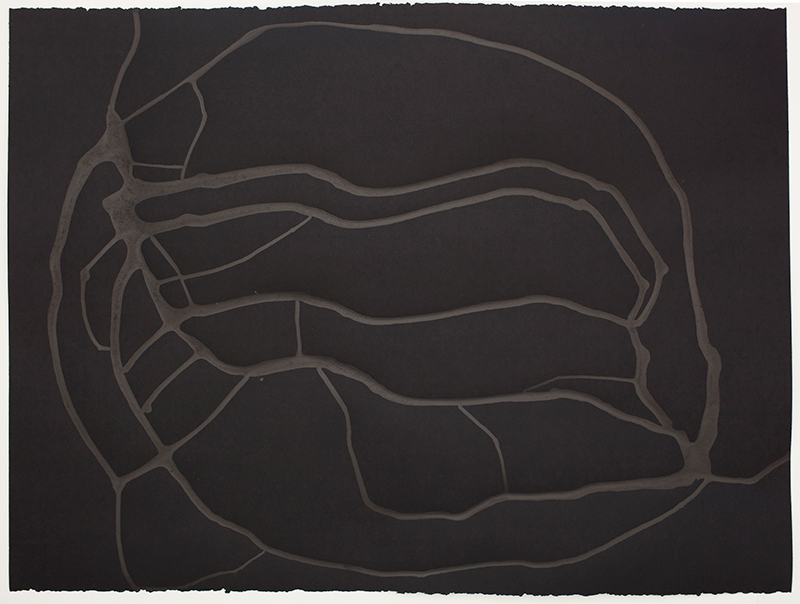
Image of Surfacing 16
Can you discuss your project with Sarah Sentilles?
When Sarah Sentilles was living in Portland, she would occasionally come to my studio to work on writing or editing while I was working on my artwork. During this time, I was halfway through making what would become the Waiting Room exhibition, although I didn’t have the title for that work at that time. We were talking about the question of naming works, and I remember Sarah saying that if she were writing an essay about it, she would call it “Body of Work.” So that idea took hold, and now, many years later, it’s happening. Sarah has written a beautiful, deeply moving essay in response to my Waiting Room project.
We started the process with an email exchange, a kind of call and response—very experimental in terms of form and length, exchanging personal stories, creative influences, things we were reading and thinking about, associations and connections related to themes of waiting, thread and cloth, fronts and backs of things, seeking and finding meaning. Sarah’s writing is both intimate and personal and at the same time addresses what’s going on formally and conceptually in my work. I am thrilled and honored to have this opportunity. The essay will be published in an artist’s book I am creating, alongside images of my Waiting Room Recordings, as well as images of the Versos, or backs of the Recordings. It has been an absolute joy to collaborate with Sarah on this project, and I am truly grateful to Sarah, Courtney, and SVMoA for supporting this project.
Copies of Sarah Sentilles and Heather Watkins's collaborative project will be available soon at SVMoA.
